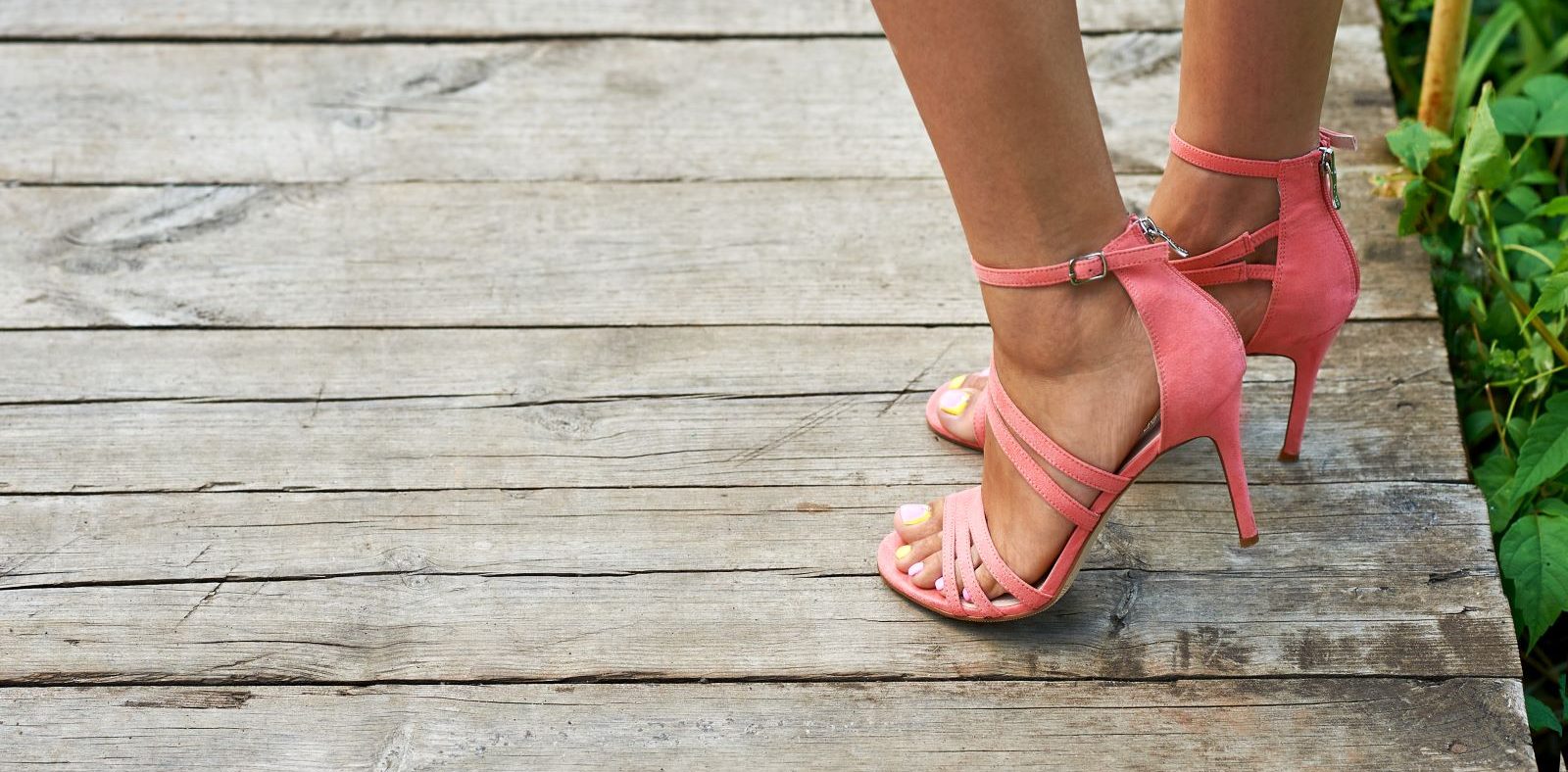Even if you can manage in Manolos and catwalk in Choos, the negative effects of fashionable footwear may outweigh the style points.
High heels and pointy-toed shoes can cause long-term damage to feet and ankles, and surgeons like John Reach, MD, with the Connecticut Orthopaedic Institute in Meriden have treated more than few related injuries.
Dr. Reach explains why heels can be a problem, and the best kind of footwear for healthy feet.
The problem lies in the incline.
Heels, Dr. Reach explains, put too much weight on the forefoot because the incline, or “ramp,” from heel to toe is too steep. As a result, you may experience:
- Imbalance. The feet – all 26 bones, 33 joints and 100-plus muscles, ligaments and tendons – help support the body and keep you balanced. Elevating half the foot on heels throws off that balance.
- Poor posture. Your posture also relies on support from the feet. If they are out of natural position, you may compensate by standing differently. This body mechanics adjustment can lead to hip, knee and lower back pain.
- Chronic foot pain. The ball of the foot bears the brunt of misaligned body weight when wearing high heels, and can hurt long after you’ve kicked them off.
- Tears and fractures. You don’t need to twist your ankle in a heel – although many do! – to damage foot muscles, ligaments and joints. The excess pressure alone can do it.
- Pain in heel and arches. The Achilles tendon is a band of tissue from the heel through the calf that lengthens and shortens with movement. When feet are elevated in high heels, the Achilles shorten. Wearing heels often cannot only damage the tendon, but also cause pain in the heel and arch.
- Pain in the knees and hips. Your knees absorb extra pressure when your body weight is pushed forward to the front of your foot. Further up, heels place your hips in a constant state of flexing nearby muscles, which can cause them to shorten and contract, causing pain and possibly injury.
Your best option for footwear
While Dr. Reach says specialists don’t know the best heel height to recommend – ultra flat shoes can also damage the feet – a nice middle elevation seems safe.
“The feet are good at adapting to the stress we put them under, but long-term mistreatment has its price,” he says.
Athletic shoes have started incorporating “rockers” in the shoes that slightly increase the ramp from toe to heel while allowing the foot to move more naturally. They also help people with severe ankle arthritis move easier.
“Shoes should protect the feet. That’s their basic function,” Dr. Reach says.
> Want more health news? Text StartHere to 85209 to sign up for text alerts
Follow these steps for happier, healthier feet
Instead of tossing your wedges and stilettos, he suggests:
- Avoid soaring to new heights. Drop down an inch or two to lower the ramp.
- Get fitted. Feet change in length and width over time, so get measured when buying a new pair.
- Skip pointy toes. Give your toes wiggle room in round, square or open toes. Crushing them together, Dr. Reach explains, can cause bunions, bony bumps at the base of the big toe.
- Switch your look. Limit the time spent in heels. Switch to flats or sneakers for your commute, or vary your daily choices.
- Strengthen your core. If your back and core muscles are toned, they can help maintain your balance in heels.



